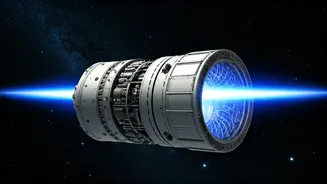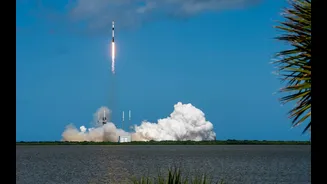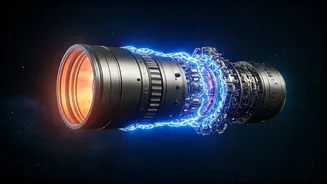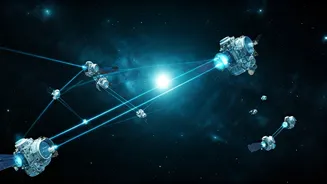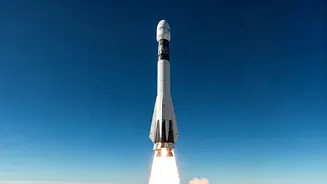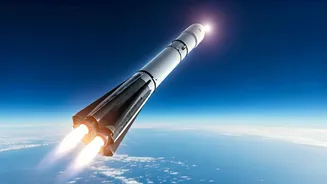FAST Thruster Unveiled
ECAPS's revolutionary Fast-Start Thruster (FAST) technology marks a significant milestone in satellite propulsion systems. The FAST thruster is designed
to provide rapid and efficient acceleration and deceleration capabilities, enhancing satellite maneuverability. This innovative system enables satellites to quickly adjust their orbits, react swiftly to changing mission requirements, and efficiently perform crucial tasks, which is a great leap forward for space operations. The technology aims to significantly reduce the time required for orbit adjustments. This advancement will be beneficial in a variety of missions, including Earth observation, communications, and scientific research. By minimizing the time and resources required for orbital maneuvers, FAST technology could lead to cost savings and improved mission efficiency for satellite operators. The introduction of FAST reflects ECAPS's commitment to delivering cutting-edge solutions for the evolving needs of the space industry.
Faster Satellite Maneuvers
The main advantage of the FAST thruster lies in its ability to start and stop very quickly, which is not usually seen in traditional propulsion systems. This fast-start capability allows for quicker adjustments to satellite orbits and positions, giving satellites greater flexibility in a wide range of operational scenarios. Satellites can now react much more rapidly to changes in mission requirements. Consider, for instance, a satellite needing to adjust its position to maintain optimal communication coverage or to refocus its imaging equipment. The FAST thruster significantly shortens the time needed to make these moves, reducing downtime and enhancing mission effectiveness. Its speed is invaluable, especially in missions that require agility and responsiveness, such as those related to disaster monitoring or rapid-response communications. The enhanced maneuverability provided by FAST enables satellites to carry out tasks more efficiently, improving overall performance and reliability.
Impact on Satellite Operations
The introduction of FAST technology is poised to have a substantial impact on the way satellites are designed and operated. The enhanced propulsion capabilities can lead to improved mission durations by extending the operational lifespan of a satellite. The efficiency of the FAST thruster translates into reduced fuel consumption, which, in turn, allows satellites to operate longer before refueling is needed or before their orbits decay. This is particularly advantageous for missions in demanding orbits or those that require a high degree of station-keeping accuracy. It can also reduce the need to launch new satellites as frequently, potentially leading to significant cost savings over the long term. Moreover, FAST technology may influence future satellite designs, making them more adaptable and able to react to changing mission demands. This leads to the possibility of more advanced and flexible satellite services that can meet the evolving requirements of space-based applications, such as enhanced Earth observation and improved global communications.
Future Space Exploration
The broader implications of the FAST thruster extend beyond improving current satellite operations, potentially setting new standards for space exploration. The increased agility and efficiency provided by FAST opens up new possibilities for advanced space missions. The rapid response capabilities can be beneficial for deep-space exploration, allowing spacecraft to navigate complex trajectories and react swiftly to unexpected events. For instance, in missions to other planets, the ability to quickly adjust orbits and change directions could streamline the journey and increase the precision with which scientific instruments are deployed. Beyond exploration, FAST technology can contribute to the development of more sophisticated space-based infrastructure. The enhanced propulsion systems can improve satellite servicing, in-orbit assembly, and space debris removal efforts, supporting the long-term sustainability of space activities. As the space industry moves into a new era, innovations like FAST play a key role in achieving these ambitious goals.
